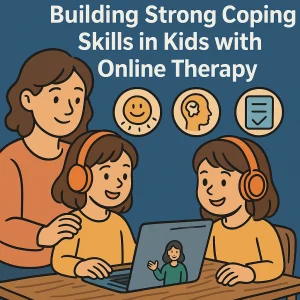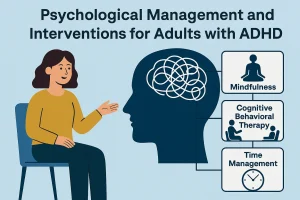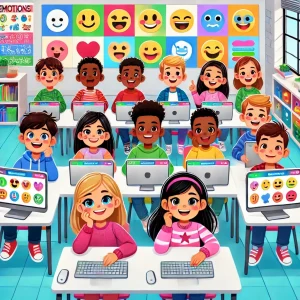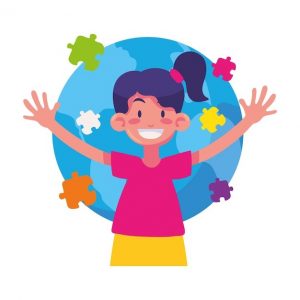Expressive Arts Therapy to Support Children with Special Needs
Last Updated: August 20, 2024
Expressive Arts Therapy (EAT) is a therapeutic approach that combines various forms of creative expression—such as art, music, dance, drama, and writing—to foster emotional growth, healing, and self-discovery. This type of therapy is holistic, focusing on the whole person, integrating sensory, cognitive, and emotional experiences. For children with special needs, EAT provides an alternative and engaging way to communicate, express emotions, and work through challenges, especially when verbal communication is difficult.
Why Nature in Expressive Arts Therapy?
Nature is often incorporated into expressive arts therapy because of its calming and grounding effects. Engaging with natural elements can reduce stress, enhance mood, and foster a sense of connection and well-being. For children with special needs, nature can provide a non-judgmental environment where they feel free to express themselves. The sensory experiences provided by nature—such as the feel of leaves, the sound of water, or the sight of a sunset—can help regulate emotions and reduce anxiety, making it easier for children to engage in therapy.
Techniques Used in Expressive Arts Therapy for Children with Special Needs (ASD, ADHD)
Expressive Arts Therapy employs a variety of techniques to help children with special needs express themselves and process their experiences. Some of the key techniques include:
- Art Therapy: Involves using drawing, painting, or sculpting to help children express their feelings and thoughts. For children with special needs, art therapy can enhance motor skills, improve focus, and provide a non-verbal way to communicate emotions.
- Music Therapy: Utilizes music and rhythm to engage children. Singing, playing instruments, or listening to music can help improve communication skills, reduce anxiety, and enhance social interaction. For children with autism, music therapy can be particularly effective in improving communication and social skills.
- Dance/Movement Therapy: Focuses on body movement as a means of expression. Dance therapy can improve motor coordination, body awareness, and emotional regulation. For children with physical disabilities or sensory processing issues, this technique can help in developing body awareness and managing emotions.
- Drama Therapy: Encourages role-playing, storytelling, and improvisation to help children explore different perspectives and express themselves. Drama therapy can improve social skills, empathy, and self-confidence. It can be particularly useful for children with social or behavioral challenges.
- Play Therapy: Involves the use of play to help children express their feelings and work through emotional difficulties. Play therapy is especially beneficial for younger children who may not have the vocabulary to express complex emotions.
Examples Of Expressive Arts Therapy for ASD and ADHD
| Technique | Example for ASD | Example for ADHD |
|---|---|---|
| Visual Arts (Painting, Drawing, Sculpting) | A child with ASD may draw their feelings using colors and shapes, helping them communicate non-verbally. | A child with ADHD sculpts using clay, improving concentration and physical expression. |
| Music Therapy | A therapist uses rhythm-based activities like drumming to improve a child’s social interaction skills. | Structured music-making helps improve impulse control and attention span through repetitive patterns. |
| Drama Therapy | Role-playing exercises help children with ASD practice social interactions in a controlled environment. | Drama games encourage spontaneity while teaching impulse control and focus. |
| Dance/Movement Therapy | Dance therapy allows children with ASD to explore movement, addressing sensory preferences. | Dance therapy provides a structured outlet for physical energy, helping regulate emotions. |
| Storytelling/Writing | Creating stories about characters facing similar challenges helps children with ASD process emotions. | Writing stories or poems helps organize thoughts and channel creativity in a structured way. |
Application for Children with Special Needs
For children with special needs, Expressive Arts Therapy can be a transformative tool. It helps them build communication skills, manage emotions, develop social skills, and boost self-esteem. The non-verbal and adaptable nature of EAT allows therapists to tailor sessions to each child’s specific abilities and needs. By engaging in creative activities, children can find new ways to express themselves, connect with others, and work through challenges in a supportive and enjoyable environment.
Conclusion
Expressive Arts Therapy (EAT) is a helpful way for children with special needs to express themselves. It uses creative activities like art, music, and movement to help children communicate and manage their emotions. These therapies offer a safe space where kids can explore their feelings and build important skills, especially when talking is difficult. Adding nature to these activities can make children feel even calmer and more connected.
For children with Autism Spectrum Disorder (ASD), ADHD, and other special needs, EAT can be a valuable tool. It allows therapists to adjust sessions to fit each child’s needs, making therapy more effective. As children participate in these creative activities, they gain confidence and learn to connect with others in new ways. Expressive Arts Therapy opens up opportunities for children to grow, learn, and feel more confident in themselves.
Frequently Asked Questions:
1. What is Expressive Arts Therapy?
Expressive Arts Therapy (EAT) is a therapeutic approach that combines various forms of creative expression, such as art, music, dance, drama, and writing, to help individuals explore their emotions, improve mental well-being, and promote healing.
2. How does Expressive Arts Therapy benefit children with special needs?
Expressive Arts Therapy offers children with special needs a safe and engaging way to express their feelings, improve communication, and develop social skills. It is especially beneficial for children who may struggle with verbal communication.
3. Why is nature used in Expressive Arts Therapy?
Nature is often incorporated into Expressive Arts Therapy because it provides a calming and grounding environment. Engaging with natural elements can help reduce stress, improve mood, and create a safe space for children to express themselves.
4. What techniques are used in Expressive Arts Therapy for children with ASD and ADHD?
Techniques include Art Therapy, Music Therapy, Dance/Movement Therapy, Drama Therapy, and Play Therapy. Each technique helps children with Autism Spectrum Disorder (ASD) and Attention Deficit Hyperactivity Disorder (ADHD) express themselves, manage emotions, and improve social interactions.
5. How does Art Therapy help children with special needs?
Art Therapy allows children to express their thoughts and emotions through creative activities like drawing, painting, or sculpting. This non-verbal form of communication is especially helpful for children who have difficulty expressing themselves with words.
6. Can Music Therapy help children with Autism?
Yes, Music Therapy can be very effective for children with Autism. It uses rhythm, melody, and structured activities to enhance communication, social skills, and emotional regulation.
7. What is Dance/Movement Therapy, and how does it help children with special needs?
Dance/Movement Therapy uses body movement as a form of expression. It helps children improve motor coordination, body awareness, and emotional regulation, making it especially beneficial for children with sensory processing issues or physical disabilities.
8. How does Drama Therapy support children with social challenges?
Drama Therapy encourages role-playing, storytelling, and improvisation, helping children practice social interactions and build empathy. It is particularly useful for children who face social or behavioral challenges.
9. What are some examples of Expressive Arts Therapy for children with ASD and ADHD?
Examples include using visual arts for non-verbal expression, music therapy for improving focus, drama therapy for practicing social skills, and dance therapy for physical and emotional regulation.
10. How can Expressive Arts Therapy help children with special needs build confidence?
Expressive Arts Therapy provides a supportive environment where children can explore their emotions and develop new skills at their own pace. Through creative activities, they gain confidence in their abilities, which boosts self-esteem and encourages positive social interactions.
About Author:
Lasya Vooturi,
Clinical Psychologist (A) & Behavioral Therapist
Lasya holds a Professional Diploma in Clinical Psychology from Amity University, where she deepened her understanding of psychological principles from March 2023 to March 2024. With over a year of dedicated experience as a Behavioral Therapist, Lasya has honed her skills in applying effective therapy techniques tailored to individual needs. Fluent in Telugu, Hindi, and English, she is adept at connecting with a diverse range of clients, ensuring comprehensive communication and understanding. Lasya’s approach is grounded in empathy and scientific rigor, making her a trusted ally in navigating mental health challenges.
Book your Free Consultation Today
Parent/Caregiver Info:
Client’s Details:
* Error Message








